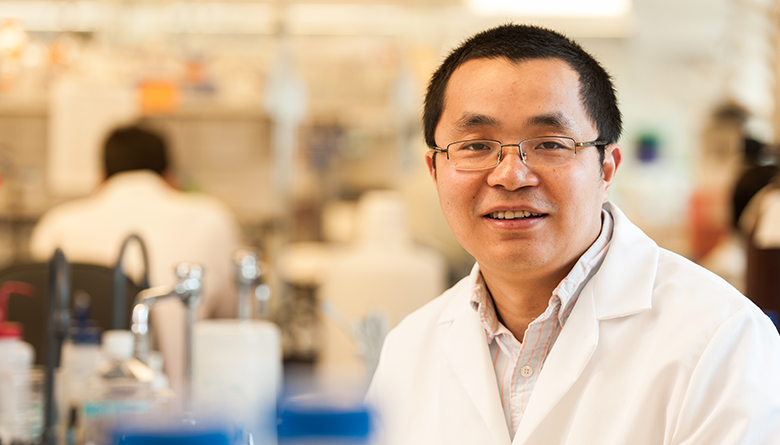
“This research tells us that chirality can change in your lifetime after birth…”
— Leo Wan, Associate Professor of Biomedical Engineering
As any left-handed person who has ever bumped elbows at a crowded dining table already knows, chirality makes a significant difference in our lives. Chirality is a property of asymmetry in which two things—like left and right hands—are mirror images of one another. It is found at all scales of life, even at the cellular level. In fact, recent research has shown that the chirality, or “handedness” of a person’s cells can have significant implications for their health.
Leo Wan, an associate professor of biomedical engineering and member of the Center for Biotechnology and Interdisciplinary Studies at Rensselaer Polytechnic Institute, recently published a study in Science Advances, detailing how an enzyme can cause previously aligned cells in a blood vessel to reverse their chirality, exacerbating health concerns related to diabetes. Wan’s is the first study to move beyond the effects of cell chirality on embryonic development, and examine its effects on physiological processes.
“This research tells us that chirality can change in your lifetime after birth, which is surprising,” Wan said. “But if here we see that disease can reverse chirality, we can also envision targeted therapies to block that process.”
The endothelial cells that line the interior of a blood vessel commonly share a right-hand orientation, fitting neatly together to form a semi-permeable barrier that tightly controls the passage of proteins and cells from the bloodstream into the surrounding tissue. But Wan’s research shows that even low levels of the protein kinase C—which is activated in diabetes—can cause some cells in blood vessels to flip to a left-hand orientation, creating misalignments. When cells with different chirality bump up against each other, gaps form, allowing veins and arteries to leak three times more blood proteins than normally constructed blood vessels.
Controlling the enzyme that causes the endothelial cells to flip could ease symptoms of swelling, nerve pain, localized low blood pressure, and risk of infection in diabetes, other diseases that cause blood vessels to leak, and smoking. Wan said understanding this process could lead to the development of a therapy that would block alterations of cell chirality inside blood vessels, a targeted approach that he anticipates should be fairly easy to achieve.
Wan’s research was supported with a combination of funding from the National Institutes of Health, National Science Foundation, American Heart Association, March of Dimes, and Pew Charitable Trusts. The authors of “Cell Chirality Regulates Intercellular Junctions and Endothelial Permeability” also include Jie Fan, Poulomi Ray, Gurleen Kaur of Rensselaer Polytechnic Institute, and Yaowei Lu and John J. Schwarz of Albany Medical College. This research is part of a larger focus on translational medicine in diseases, including diabetes, at the Center for Biotechnology and Interdisciplinary Studies, and is an example of the collaborative work that is central to The New Polytechnic, the driving model for teaching, learning, and research at Rensselaer.
By Mary Martialay




